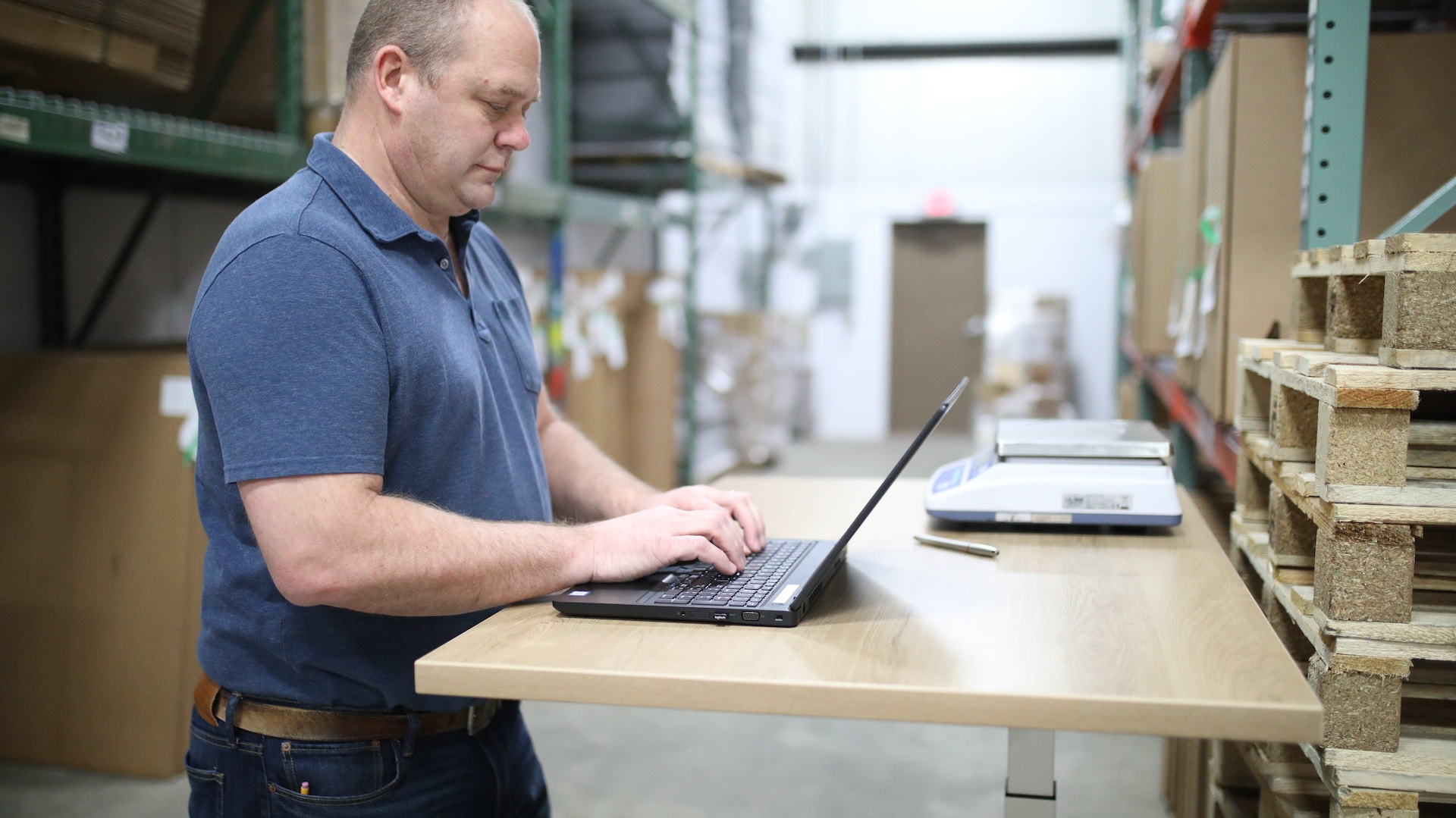Dropshipping has become more popular than ever and is now a sizeable part of the e-commerce landscape. As of 2023, around 23% of all online sales are fulfilled via dropshipping, and this figure is set to grow because it is one of the quickest and easiest ways to start a business.
Whether you’re looking to start a dropshipping venture or are wondering how it all works, we’ve got you covered. Keep reading to learn about a dropshipping business, the key benefits and how to find a reliable supplier.
What Is Dropshipping?
Dropshipping is a retail fulfilment method where you list products on your site or storefront but don’t actually have them in your possession. You act as a middleman between the buyer and the supplier, avoiding the complexities of finding storage space and staying on top of inventory management.
How Does Dropshipping Work?
It’s a relatively straightforward process; probably why it’s such a popular small business to set up. This is how dropshipping works:
- The customer makes a purchase
- You process the order and transfer it to a third-party supplier (wholesaler or manufacturer)
- Third-party supplier prepares and ships the order on your behalf
- The customer receives their order.
Generally, you’ll only pay for the item from the supplier once it’s been purchased by the buyer, giving you little overhead. Additionally, since you don’t own the inventory, you don’t need to store it or handle the shipping responsibilities, which have considerable costs.
Benefits Of Dropshipping
From low costs overall to excellent scalability prospects, there are numerous benefits to the dropshipping model. Here are some top perks to bear in mind:
Low start-up costs
You can start an online store with little investment money, unlike a physical shop where you will spend thousands on inventory before you even begin trading. In most cases, you’ll only be required to buy the product once the sale is in hand, so there’s much less risk involved.
Easy to run
One of the key perks of dropshipping is ease. Since you don’t have physical products in hand, you won’t need to manage inventory, pack and ship orders, process returns or manage stock orders. Likely, you will manage customer service but the rest falls on the shoulders of your supplier.
Low overhead
The ongoing costs of running your business stay relatively low as there isn’t a need to keep inventories stocked or rent warehouse space to store products. You’ll need to pay for marketing and upkeep costs of your online store, but fees are minimal compared to the alternatives.
Flexible working location
Most dropshipping businesses are run from home, allowing you to run your company from anywhere in the world. All you’ll need is a laptop and internet connection to communicate with suppliers and offer speedy customer service.
Multi-channel selling opportunities
With dropshipping, you can take advantage of various platforms. You can set up a domain to sell from there and open a storefront on places like Amazon and Etsy. Selling on multiple channels will offer your business more visibility and further sales opportunities.
Highly scalable
There are fantastic opportunities for scalability as you can grow your business and accept more orders without ever needing to increase your warehouse space, packaging requirements or shipping operations.
Flexibility
Dropshipping offers the possibility to sell certain products with little risk. You won’t need to invest lots of money into goods you’re unsure will sell. Instead, you can carry out a trial period; if they don’t sell, there’s little loss to you.

Limitations of Dropshipping
Dropshipping may sound like a get-rich-quick scheme, but it’s not easy money. Here are some drawbacks you should consider before getting started:
Highly competitive
The low start-up fees and lack of investment are certainly benefits, but this also makes it a highly competitive market. If you’re selling a more generic product, be prepared for a lot of competition. More established businesses will have better deals with suppliers, which allows them to undercut you on prices you simply can’t match.
Low profit margins
Your overhead may be low, but the returns are too. With less money coming in, there’s less money going out, and you’ll need to do a lot of business to stay afloat. When you make a sale, be aware that most of the profit will go to the supplier. Experts suggest that an absolute maximum profit margin of 15 -20% is achievable with dropshipping.
Limited control
While not having to deal with inventory may sound like a perk, it can come with a downside too. You can’t guarantee the quality if you don’t encounter the product regularly. Additionally, you won’t have any control over the fulfilment timeline as it’s up to your suppliers to select, pack and ship.
Be aware that you’ll still need to deal with customer service and handle any repercussions that come with mediocre products or long shipping times.
Hard to stand out
If you want to make a brand, you should know that it’s becoming increasingly difficult to stand out with the dropshipping method. Your products won’t be unique or distinguishable from other sellers, so it’s challenging for customers to differentiate and have a reason to buy from you instead.
How to Start Dropshipping
Even though it has become more difficult to be successful with dropshipping, it’s certainly not impossible. Here are our top tips to get you started on the right foot with dropshipping:
- Find a niche: Instead of choosing a wide range of generic products, find a few specific ones from an industry you know. Position yourself as an expert in a speciality area and build your brand from here. This will set you apart from competitors and provide you with a target audience to market to.
- Do market research: Take time to familiarise yourself with the search landscape of the products you’re hoping to sell. Is there a lot of competition? This may indicate a saturated market. Are there lots of brands present? Be aware that bigger companies can sell for much lower prices.
- Find a quality supplier: This is the most important thing to consider with dropshipping. Your chosen supplier should have a good reputation in the industry, and there should be many positive reviews to reflect this.
- Build your store(s): Find out where your target audience is and choose a selling platform to reflect this. Or maybe you could benefit from two stores. Are most similar products sold on Amazon or through the business’s website?
- Spend time on a marketing plan: Think about how you will get your products in front of your customers. Build a thorough marketing plan that includes a mix of paid ads, social and organic.
- Measure and optimise results: Be prepared to evolve and adapt your sales approach. Monitor your conversions and overall traffic to your site or store and analyse what’s working. Don’t be afraid to change products that aren’t selling and try new angles.
How Do I Find a Good Supplier?
There are two main pipelines to finding a dropshipping supplier. You can use a supplier database and find a wholesaler or an app to connect you to suppliers. Shopify has its own called Dsers — you can browse through products and order directly through Shopify, offering you a bit of peace of mind.

Tips for choosing a dropshipping supplier
The quality of your supplier is the be-all and end-all in the world of dropshipping. As you won’t be hands-on with the product, you must choose a trustworthy supplier to ensure your customers get the best possible product and reduce the negative splashback on your business.
When carrying out your search, keep the following checklist in mind:
- Does it have a policy for returns or damaged goods?
- Are timeframes for order fulfilment reasonable?
- Does it have customer support?
- Are orders insured?
- Does it have fraud protection?
- Does it have reviews? If yes, how positive are they?
If they have in-house customer support, try it out yourself and see how quick response times are and how they deal with their customers.
As a new business, it’s a good idea to stick to more well-known suppliers with good reviews to help get your dropshipping venture off to a good start. A lousy supplier means a bad customer experience, and if you quickly rack up negative reviews from the offset, it may mean that your business fails before it even gets off the ground.
Ready to launch your new dropshipping business? Register your company with Mint Formations today. If you have any questions about starting your new venture, get in touch, and our friendly team will be happy to help.

